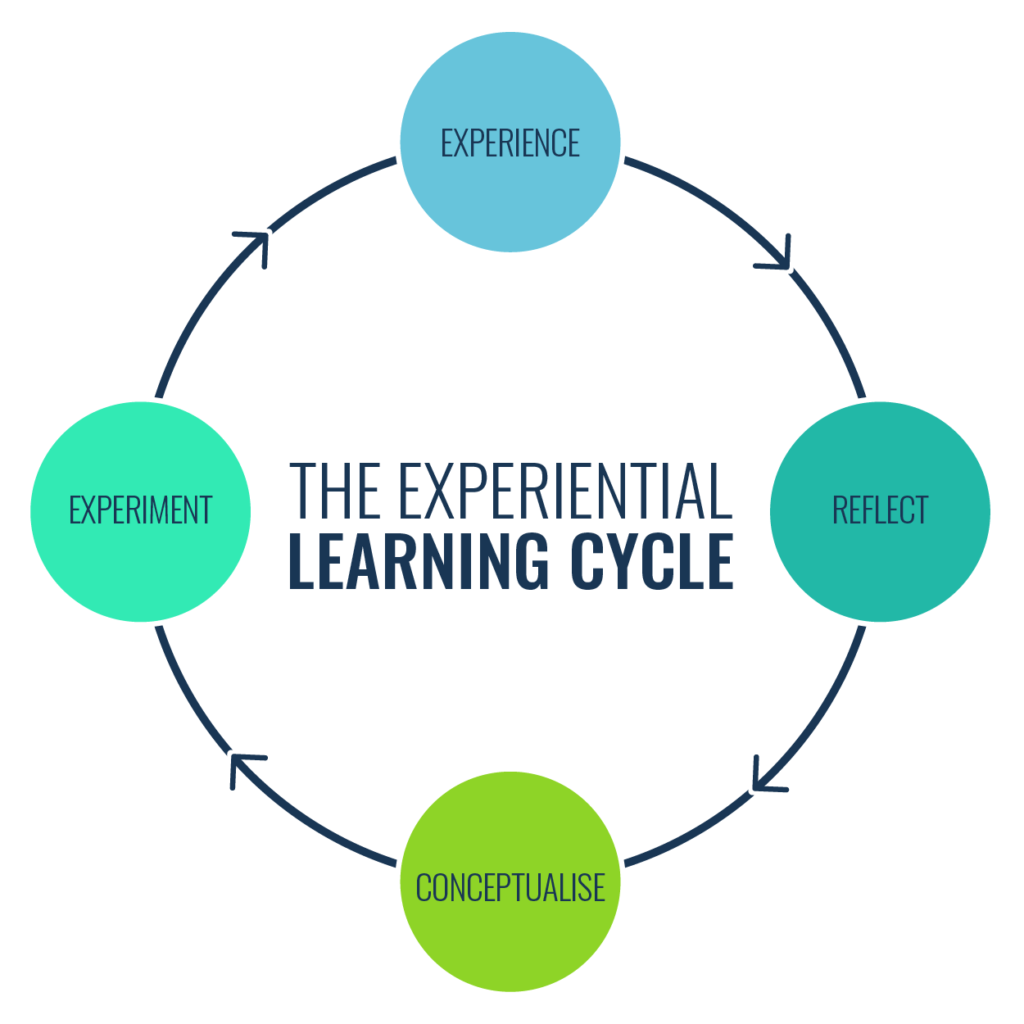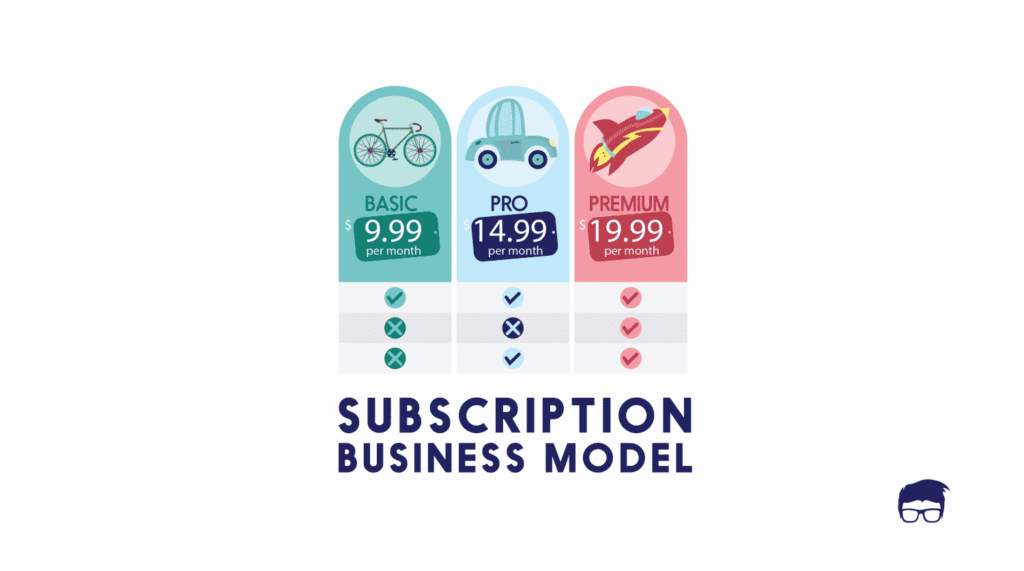


February 27, 2024
Eyes4Research
The cannabis industry has experienced a whirlwind of changes in recent years. From legalization movements sweeping across various parts of the U.S. to the emergence of new products and consumption methods, the landscape of the cannabis market has been dynamic. However, amid all the hype and excitement, there’s a lingering question: Is the cannabis industry experiencing a decline, or has it simply reached a plateau?
Understanding the Current Cannabis Landscape
The initial boom of the cannabis industry was fueled by optimism and high expectations. As legalization efforts gained traction in different parts of the world, investors poured funds into cannabis-related ventures, and consumers eagerly explored a plethora of products ranging from recreational to medicinal. This surge in interest led to exponential growth and a seemingly boundless potential for the industry.
Are There Signs of Saturation in the Cannabis Industry?
However, as the industry matured, certain challenges became apparent. Regulatory hurdles, oversupply issues, and fierce competition have presented significant obstacles for businesses operating in the cannabis space.
Market saturation, especially in regions where legalization occurred early on, has led to price wars and squeezed profit margins for many companies. Moreover, shifting consumer preferences and the emergence of alternative products have added further complexity to the market dynamics.
Plateau or Decline?
The question of whether the cannabis industry is on a downward trajectory or has simply reached a plateau is a nuanced one. While some market segments may be experiencing a slowdown, others continue to show promise and resilience.
For instance, the medicinal cannabis sector continues to expand as more research validates its therapeutic potential and as regulatory frameworks become more accommodating.
What is the Role of Market Research in Understanding the Cannabis Industry?
In navigating these uncertain waters, reliable data and insights are more crucial than ever. This is where custom online panels, such as the ones created and managed by Eyes4Research, can make a difference.
By leveraging the power of digital platforms, custom online panels allow businesses to collect real-time feedback from targeted demographics and key stakeholders within the cannabis industry.
Whether it’s understanding consumer preferences, tracking market trends, or evaluating the efficacy of marketing strategies, custom online panels offer a cost-effective and efficient solution for staying ahead of the curve.
Why Choose Online Panels?
Custom online panels enable businesses to tailor their research initiatives to accommodate specific objectives and demographics, ensuring that the insights gained are actionable and relevant.
With customizable survey designs and access to diverse participant pools, businesses can gain deeper insights into consumer behaviors, preferences, and attitudes toward cannabis products. In addition, the scalability of online panels allows for seamless expansion into new markets and the ability to track evolving trends over time.
The future of the cannabis industry remains uncertain, but one thing is clear: staying informed and adaptive is the key to success in this rapidly evolving market. By leveraging online panels, businesses can gain the insights needed to navigate challenges, identify opportunities, and stay ahead of the competition.
Whether the industry is experiencing a decline or a plateau, those who invest in understanding their target audience and market dynamics will be well-positioned to thrive in the ever-changing world of cannabis.
Read more about cannabis consumers and cannabis products on the Eyes4Research blog. Eyes4Research also has everything you need to collect high-quality insights from cannabis users. Our panels are comprised of B2B, B2C, and specialty audiences ready to participate in your next research project. Learn more about our cannabis user panel and our other specialty panels here.

February 12, 2024
Eyes4Research
Five years ago electric vehicles (EVs) were the consumer rage and appeared poised to overtake traditional, combustion engine autos in sales. Propelled by a number of factors, including government subsidies, environmental consciousness, and the allure of new technology, automakers couldn’t roll out new EV models fast enough. But within the last year that’s all seemed to have changed. Although EV sales are still growing, they appear to have peaked and automakers have responded by cutting back production and sales. Auto brands, car dealerships, investors, and consumers that understand this trend, and where it might go, will be in a position to possibly take advantage of the current EV slump.
You’ve certainly been affected by the EV revolution in some way. You may own an EV or know someone who does, and if you don’t then you’ve seen EV charging stations or watched several commercials for the latest EV brand. There’s no doubt that EVs have staked out a significant segment of the auto market, but it’s also true that the EV revolution has fallen short of some expectations. So let’s take a look at the EV industry and the problems it’s recently faced and why, as well as what investors and consumers can expect in the future.
The Green Dream
Although EVs may have only recently entered the public counscieneness at a major level, the first cars with batteries were invented in the late 1800s. In fact, by 1900 EVs were one-third of the cars on the road, but they were soon after replaced by autos with combustion powered engines and all but forgotten for decades.
The concept of EVs was brought back in the late twentieth century during the gas crises and oil embargos and then in the 2000s when the push for renewable, green energy became popular with many in government, especially those on the left of the political spectrum. The green energy push has led some state to pass laws requiring that all new automobiles sold within their borders must have zero emissions by a certain date. So far, California has set a date of 2035 with Connecticut, Maryland, Massachusetts, New Jersey, New York, Oregon, Washington, and Rhode Island all committing to banning new sales of combustion engine autos at a future date.
The federal government has recently also used the law to promote EVs. As part of the Inflation Reduction Act of 2023, which the Democrat controlled Congress passed, and was signed by Democrat President Joseph Biden, EV buyers are eligible for tax credits. So, different state governments and the federal government have clearly used a “carrot and stick” approach to push consumers to buy EVs and the numbers show that this may have initially been successful, but things now appear to be going the other way.
Sagging Sales
EV sales peaked in 2022 and although growth continued in 2023 the pace slowed significantly. Analysts now believe that Biden’s target of EVs capturing 50% of the auto market by 2030 seems like a pipe dream. Yet if EV sales continued to grow in 2023, why the negative forecast for the space?
The reasons for analysts being bullish on EVs involves a number of different factors, although for the most part it comes down to the simple economic concept of supply and demand. Automakers made major cutbacks on nearly all EV models and prices in 2023. Tesla slashed prices on all its models while Ford reduced production on its much hyped EV F-150 and postponed $12 billion in EV spending. General Motors also announced that it has delayed the launches of three of its new EV models.
The pullback by auto makers has extended to car rental and sales companies as well. Car rental giant, Hertz, recently announced that it’s selling about 20,000 EVs from its fleet, which includes Teslas. This is just two years after Hertz made a deal with Tesla to buy its newest models after the rental company planned to convert 25% of its fleet to electric by the end of 2024. The EV slump has also hurt car dealerships across the US.
The car sales industry uses the term “days’ supply” to describe how long it takes for current inventory to sell at the current sales rate. In late 2023, the days’ supply for EVs averaged about eighty-eight days, which was double what it was one year prior. By comparison, the average days’ supply for combustion engine vehicles was fifty-nine days in late 2023, which was normal by industry standards. All of this indicates that the demand for EVs has simply waned, but the reasons for the EV slump are a little complicated.
Not Buying into Electric
Among the many factors that have driven consumers to shy away from EVs, economic considerations are at the forefront. But even these economic factors are a bit more complex. For example, one of the practical selling points of EVs was that they more than pay for themselves by saving money from not having to buy gas. When the gas prices skyrocketed in 2022, EV sales were at their peak, but just one year later gas was down about thirty cents per gallon on average, which many experts believe pushed consumers to purchase what they view as more reliable autos – combustion engine vehicles. Consumers are also driven by the still high costs of most EVs.
As EV sales peaked in 2022, they appeared poised to become status symbols just as much as everyday modes of transportation. The reason for the status was partially due to price range remaining outside the budget of most people who view cars as a necessity more than a luxury item. Cox Automotive pegged the average EV price at $50,683 in September 2023, which although down 22% from the previous year is still high compared to combustion engine vehicles. This study was bolstered by a CarGurus report that found EVs were still 28% higher than their combustion engin26e counterparts. Consumers interested in buying EVs can also expect to pay higher interest rates at the dealerships, creating another factor that has dulled consumer demand. Part of the reason for EVs’ higher costs is the novelty, but the technological knowledge and specific components needed to make them are the driving force.
The battery is the most expensive part of any EV, and the bigger the battery the more expensive the vehicle. One of the major problems consumers often cite with EVs is their limited range, so in order to mitigate this problem manufacturers have made larger batteries for their vehicles. Larger batteries have nominally reduced the range problem, but they’ve also contributed to higher overall costs, creating a sort of catch-22.
In addition to the costs of EVs, consumers have also cited performance concerns. Range is the number one issue consumers cite, with most EVs offering 250 to 500 miles on a single charge, although those numbers depend upon conditions. Cold weather adversely affects EV batteries and when combined with limited charging networks, has led to problems for some EV owners. A January 2024 polar vortex left some EV owners in Chicago waiting hours in line for charges, bringing another major concern consumers have with EVs. A report by AAA stated that 56% of the people they interviewed cited a lack of convenient charging options as a reason for not going electric. EV owners can purchase home charging stations but they cost several thousand dollars more to an already highly priced auto.
Consumers have also discovered that just because EVs don’t have large block engines, they are far from immune to mechanical and technical problems. A Consumer Reports study showed that from 2021 to 2023, 80% more problems were reported in EVs than their combustion engine counterparts. The economic and performance issues are clearly the driving forces behind consumer disinterest in EVs, but the automakers also have themselves to blame for poor marketing.
The automakers originally marketed EVs as eco-friendly version of combustion vehicles, but consumers quickly found out that this wasn’t true. Although EVs are less complex to build and have simpler drive trains, they are more complex machines in many ways. Many new EV owners are upset when they learn that it takes plenty of training to do the simplest of maintenance on EVs and there are far fewer mechanics who have the background to work on them. Finally, in a country that has become so divided by politics, geography, and age, EVs are often viewed as cars of young, urban liberals. Even Telsa founder and CEO Elon Musk’s recent dabbles with political statements and endorsements of ideas and candidates on the right-wing of the political spectrum have so far not changed this image.
Future Trends
Examining sagging EV sales and the reasons behind it can help investors, auto dealers, and consumers understand what to expect in the future. Don’t expect the EV industry to collapse, but it’s likely automakers will continue with their current pullback of EV models. There’s signs that some automakers are switching production to hybrids, which would politically appease eco-conscious consumers but not necessarily meet government mandates. Toyota has recently increased its hybrid production and currently offers more than twenty models that are all more popular than its EV models.
It’s also possible that the federal and different state governments will reconsider some of their EV mandates. It’s very unlikely that the auto industry will meet the federal government’s 2032 goal of 67% of all new vehicles being EVs, as they are currently just under 8% of the market share.
All of this has many potential implications for consumers. If the federal and state governments continue to mandate EV production, the automakers may have to reduce costs further, but it may be at the cost of quality. Auto brands could increase sales with better marketing campaigns that target Middle America as well as emphasizing how EVs are different than combustion vehicles. It may be that EVs will continue to be a niche market in the US, but the automakers that understand how consumer sentiments have driven the current EV slump will be in a position to take advantage of these future trends.
About the author:
An industry leader and influencer – Rudly Raphael specializes in all aspects of research logistical design involving quantitative methodology, implementing internal system infrastructure to streamline business processes, channelling communication and developing innovative research solutions to ensure Eyes4Research remains a competitive force in the marketplace. An entrepreneur, inventor (patent holder), blogger and writer – his articles have been published in various magazines such as Medium, Ebony Magazine, Bussiness2Community and also cited in various journals and academic publications.

February 7, 2024
Eyes4Research
Advertising is dynamic– crafting compelling B2C and B2B brand messages and captivating creative materials is essential for brands to cut through the noise and resonate with target audiences. Let’s dive into the valuable role of online panels in refining advertising messages and shaping your creative development.
Understanding Message Testing and Creative Development
Message testing evaluates the effectiveness of advertising messages to ensure they resonate with the intended audience. Meanwhile, creative development involves refining visuals, sounds, and narratives to create engaging and memorable ads.
Leveraging Online Panels for Message Testing
Custom online panels, such as the ones created and managed for our clients by Eyes4Research, offer a diverse pool of participants, allowing brands to select specific demographics, interests, and behaviors for targeted feedback. Through well-designed surveys, brands can gain valuable insights from panelists about their perceptions of advertising messages and creative elements.
Collecting Feedback and Insights
Panelists provide feedback on message clarity, relevance, and memorability, helping brands better understand which messages resonate most effectively. Additionally, evaluating creative elements such as imagery, music, and branding aids in refining the visual and auditory components of ads.
Iterative testing and Optimization
Using iterative testing allows B2C and B2B brands to refine advertising messages and creative elements based on panel feedback. By analyzing data and making adjustments, brands can optimize their campaigns for maximum impact and resonance with the target audience.
Applying Insights to Advertising Campaigns
Insights gleaned from message testing and creative development inform strategic decisions in advertising campaigns. From media planning to content creation, understanding audience preferences and perceptions enhances the effectiveness of marketing efforts.
Eyes4Research creates and manages custom online panels that offer our clients the opportunity to tailor their research to specific audience segments ensuring targeted actionable insights. By partnering Eyes4Research, B2C and B2B brands gain access to a robust panel of engaged participants, facilitating efficient and effective message testing and creative development.
Harnessing the power of online panels for message testing and creative development is key to crafting impactful advertising campaigns. By leveraging insights from panelists, B2C and B2B brands can refine their messaging, captivate audiences, and drive success in the competitive landscape of advertising. Partner with Eyes4Research to unlock the full potential of custom online panels for your team’s marketing strategies.
Online panels are powerful tools that provide a more affordable way for companies to gather valuable data to determine the value of their brand’s product or service. Eyes4Research has everything your company needs to collect high-quality insights from consumers. Our panels are comprised of B2B, B2C, and specialty audiences ready to participate in your next research project. Learn more about our online panels here.

November 9, 2023
Eyes4Research
Influencer marketing has evolved into a powerful force shaping consumer behavior and purchasing decisions. With the rise of social media, influencers have become key players in endorsing products and services significantly influencing how consumers perceive, evaluate, and decide on their purchases.
The Power of Influence
Influencers, with their substantial reach and compelling content, have established a deep connection with their audiences. Their authentic endorsements and product reviews often hold immense sway over consumer preferences. Recent studies have shown that most consumers trust influencer messages more than brand advertisements, leading to a notable shift in their purchasing patterns.
Impact on Consumer Decision-Making
The influence of these social media personalities extends beyond just awareness; it directly impacts consumer decision-making. When an influencer vouches for a product, their audience tends to view it more favorably. This social proof can lead to increased brand trust, heightened interest, and, in many cases, swift purchasing decisions. An increasing number of consumers have made purchases based on influencer recommendations.
How Custom Online Panels Provide Consumer Insights
Understanding the intricacies of consumer behavior and preferences is vital for any B2C and B2B business seeking to leverage influencer marketing. Custom online panels, such as the ones created and managed by Eyes4Research, serve as a potent tool for collecting precise consumer insights. These panels allow companies to engage directly with their target audience, collecting valuable data on their perceptions, desires, and decision-making processes.
By leveraging custom online panels, B2B and B2B businesses can:
Influencer marketing has revolutionized the way consumers make buying decisions. The trust and rapport built by influencers with their followers have an undeniable impact on consumer behavior. To truly harness this influence and navigate the market effectively, understanding consumer behavior through custom online panels is crucial.
Unlocking the power of influencer marketing alongside comprehensive consumer insights obtained from custom online panels created by Eyes4Research can propel B2C and B2B businesses toward making informed, strategic decisions that resonate with their target audience, fostering stronger brand-consumer relationships and ultimately driving business success.
Read more about social media and marketing on the Eyes4Research blog. Eyes4Research also has everything you need to collect high-quality insights from consumers who are active on social media platforms. Our panels are comprised of B2B, B2C, and specialty audiences ready to participate in your next research project. Learn more about our specialty panels here.

October 6, 2023
Eyes4Research
Successful B2C brands that enjoy a truly loyal audience are increasingly the brands that recognize the power of inclusivity and diversity in their marketing strategies. Embracing gender-neutral marketing has emerged as a true game-changer, allowing brands to connect with a broader audience and drive B2C brand loyalty.
An example of a brand using gender-neutral marketing to great effect is Nike. Nike has been a trailblazer in gender-neutral marketing by promoting its products to athletes of all genders. Their “Just Do I” campaigns feature athletes of various backgrounds, genders, and abilities.
Gender-neutral marketing has many advantages, and market research helps supercharge a gender-neutral marketing strategy by giving B2C brands the tools they need to gain insights from audiences and shape effective campaigns.
Why Breaking Down Gender Stereotypes is Important
Traditional marketing often relied on gender stereotypes to target specific demographics. However, audiences today demand authenticity and inclusivity. B2C brands that challenge these stereotypes and adopt gender-neutral approaches are not only staying relevant but also resonating more deeply with their audience.
Using Market Research as a Tool to Craft Gender-Neutral Marketing Strategies
To excel in gender-neutral marketing, B2C brands need to understand their audience on a deeper level. For experienced data collection agencies like Eyes4Research, custom online panels have offered a solution for clients looking to take their marketing to the next level by digging deeper into the preferences of their audiences. Here is why custom online panels are the key to success in gender-neutral marketing strategies:
In a market where diversity and inclusivity are celebrated, gender-neutral marketing is no longer an option; it’s a necessity. B2C brands that take the lead in this movement not only win the loyalty of a more extensive audience but also secure their position as forward-thinking and socially responsible B2C companies.
B2C brands that are looking to embrace gender-neutral marketing should consider harnessing the power of custom online panels. Brands that do will be empowered with invaluable insights, enabling their brand to stay ahead of the curve and truly connect with their audience.
Read more about marketing and market research on the Eyes4Research blog. Eyes4Research also has everything you need to collect high-quality insights from consumers. Our panels are comprised of B2B, B2C, and specialty audiences ready to participate in your next research project. Learn more about our specialty panels here.

September 12, 2023
Eyes4Research
When the World Wide Web became publicly available in 1991, it revolutionized the way we work and play and perhaps more importantly how we consume information and goods. The early internet was relatively primitive and boring, but it soon evolved to be dominated by ecommerce and then social media platforms. Many tech and business experts believe that we are at the precipice of a new internet era, often referred to as “Web3,” for the third iteration of the internet. Proponents say that Web3 will be a decentralized internet that runs on blockchain technology, and brands that know how to utilize it to connect with their consumers will gain an advantage in the new tech-driven economy.
Gavin Wood, the founder of proof-of-stake cryptocurrency Polkadot and cofounder of Ethereum, first coined the term Web3 in 2014 to describe the increasingly decentralized internet based on blockchain technology, which he helped to create. Obviously, the definition is a bit broad and open to interpretation to a certain extent, so in the subsequent years others have added to Wood’s definition. As technology has advanced since 2014, and more people have become familiar with blockchain technology, other important elements of Web3 that’ve been identified are its trustless nature – which may sound negative, but in this context it’s not and will be explained more later – and users/consumers control over their personal information.
The trends suggest that although there are many barriers to the complete adoption of Web3, where it is adopted, investors, brands, and consumers will reap incredible benefits. Consumers will enjoy the control they will gain over their personal data, while brands will find new ways to connect with their loyal consumers. So let’s take a look at how Web3 started, where it is today, and how consumers can expect from this new iteration of the internet.
How the Internet Became Web3
Tech experts generally divide the history of the internet into three phases. The first phase, known as Web 1.0, includes the period from just before the World Wide Web went public in 1991 to 2004. This era of the internet was marked by static web pages that were primarily informational and not interactive, although some of the earliest ecommerce sites, such as Amazon, began during this era. The second era, Web 2.0, began in the mid-2000s with the growth of social media, blogs, and ecommerce. The internet became much more interactive and the technology was driven by smartphones and cloud computing. As blockchain technology became more widespread by the late 2010s, experts have argued that we entered the latest version of the internet around that time.
As we enter this new internet paradigm, its success will depend on its widespread adoption, which will largely be contingent upon how well consumers understand the technology. Web3 will be based on blockchain technology, which may sound complex at first but it’s really straightforward. Blockchains are online storage systems that use encryption and distributed computing to protect the data stored on them. Encryption gives only limited people access to the data, while the distributed or decentralized element means that shards of data need to match in order for data packets to be retrieved or transactions to take place. In theory, and so far in practice, this form of internet creates a “trustless” format, whereby users are not forced to trust a company or central authority to protect their data or ensure that transactions are legitimate. Blockchain technology has opened an array of opportunities for investors and consumers, some of which are currently being realized.
Real World Web3 Applications
Cryptocurrencies have led the transition to Web3, with Bitcoin, the world’s first cryptocurrency being released on January 9, 2009. Bitcoin’s potential application for Web3 investors and consumers were quickly realized, as it remains the number one cryptocurrency by market cap because of its utility as money, a store of value, and as a financial instrument. But as much as Bitcoin may’ve opened the Web3 door, it’s the number two cryptocurrency by market cap, Ethereum, which will likely play a bigger role in the new internet paradigm.
The Ethereum blockchain has proven to be highly adaptable and a destination for businesses and consumers who use Web3. Everyday new “tokens” are being created that allow users to access the Ethereum blockchain for decentralized finance, smart contracts, and non-fungible tokens (NFTs). NFTs are digital art that are “minted” as originals and stored on the blockchain. As strange as the concept of NFTs may seem to many, they’re gaining in popularity and market cap. Investment bank Jefferies that NFTs will have a market value of over $85 billion by 2025.
Smart contracts, decentralized finance (DeFi), and decentralized autonomous organizations (DAOs) will also play a role in the emerging world of Web3. Smart contracts are contracts that are stored on a blockchain and can only be completed or fulfilled when certain requirements are met, while DAOs are companies that are bound by rules coded into the blockchains they use. These two concepts are combined when DAOs store data, such as retail prices, and contracts with wholesalers on blockchains, with the advantage being they are invulnerable to standard hackers.
When DAOs and traditional companies use blockchains for business purposes, it is referred to as decentralized finance (DeFi). DeFi can include person-to-person or company-to-company transaction, with the primary benefit being that banks are bypassed. Although transaction fees are part of every blockchain transaction, they are often small and consumers only pay for the transactions they make. As more consumers are learning the ropes of Web3 and blockchain technology, companies and brands are starting to pay attention.
Some Brands That Have Adopted Web3 and DeFi
Due to the nature of Web3, it isn’t immediately apparent how many brands have adopted the new internet paradigm, but a quick look reveals that it is catching steam. Microsoft, AT&T, and Overstock.com have all begun accepting crypto for bill and merchandise payments, perhaps acting as the vanguard of DeFi and Web3 adoption among major brands. But a number of lesser known companies are also making inroads in the world of Web3.
Among the brands using Web3 and DeFi to watch out for the in coming years are the blockchain based social platform, Steemit, and the blockchain based supply chain, Everledger. Another company to follow is the decentralized exchange trading market, Augur. The reason why these three companies are potentially poised for success is because they all combine the new technology of Web3 with goods and services current consumers want.
Future Trends and Consumer Benefits of Using Web3
There’s no doubt that Web3 adoption will set the tone for technology advances in the coming decades, but brands that know how to utilize it, such as those mentioned earlier, will use it to connect with their consumers. The trustless element of blockchain technology gives plenty of freedom to the consumer in many different ways. For example, consumers will be able to trade online apps on blockchains using smart contracts, cutting out the middleman in the process. Web3 also has the ability to give consumers more control over their data.
Under the current internet paradigm, personal data is stored on servers that are vulnerable to hackers, but on Web3, data can be stored on blockchains that can only be released if the owner allows it. In addition to enhanced security, blockchain data storage will cut down on spam and those who use it will be able to say goodbye to third party cookies forever!
One of the most important future trends of Web3 will be how it connects brands with its consumers, by building more trust and loyalty. Because 76% of consumers don’t know what companies are doing with their personal data, the adoption of Web3 gives brands an opening. Perhaps somewhat ironically, the trustless aspect of the blockchain can provide a way for brands to rebuild trust with their customers, although it will require consumers to adopt the new technology. Brands can also leverage the new technology in other unique ways to build customer loyalty.
Nike has recently combined blockchain technology and the metaverse – which is considered another part of Web3 – to sell virtual sneakers in the virtual world, Roblox. Fashion brand Dolce & Gabbana recently combined the metaverse and NFTs to connect with its consumers by auctioning a nine-piece collection of NFTs for $6 million, which included a suit that the auction winner can wear in the metaverse. Brands can also issue NFTs and/or blockchain tokens as a way for their consumers to access special online events or deals, ultimately replacing standard loyalty points.
How well brands migrate loyalty rewards programs to Web3 will likely play a much bigger role in the retail space in the future, giving consumers more power over how they store and use those points. An average consumer is enrolled in 18 loyalty programs, but they are only actively engaged in less than half of them, meaning lost points for the consumer and fewer chances for brands to engage their customers. Web3 technology can bring customer loyalty programs to the next level by offering digital rewards that are uniquely ownable, tradeable, and collectable, transforming brand-customer transactions into a more immersive experience.
Of course the adoption of Web3 faces some barriers. Most of the big tech companies have no incentive to give up the power they hold over Web 2.0 and the current US government is hostile- to crypto generally and appears to know little, or care, about blockchain technology’s wider uses. Consumers are also slow to learn about what many perceive as an arcane form of technology, but many of these barriers existed before other major technology revolutions throughout history. Web3 may not replace the current iteration of the internet overnight, but brands that recognize its value as a tool to connect with consumers will find that it will be useful in the coming years.
About the author:
An industry leader and influencer – Rudly Raphael specializes in all aspects of research logistical design involving quantitative methodology, implementing internal system infrastructure to streamline business processes, channelling communication and developing innovative research solutions to ensure Eyes4Research remains a competitive force in the marketplace. An entrepreneur, inventor (patent holder), blogger and writer – his articles have been published in various magazines such as Medium, Ebony Magazine, Bussiness2Community and also cited in various journals and academic publications.

September 1, 2023
Eyes4Research
In recent years, education has undergone a remarkable transformation, driven by the rapid-fire advancements of technology. The surge in virtual learning platforms has revolutionized the way audiences acquire knowledge, breaking down barriers and offering unprecedented flexibility for students. Here are some possible reasons behind this surge and what their impact has been on education.
Why Virtual Learning Platforms Are Accessible and Convenient
Virtual learning platforms have democratized education by making learning accessible to audiences around the globe. No longer constrained by physical location, students can access courses from top institutions and experts without having to relocate to commute. This convenience has been a driving force behind the popularity of virtual learning.

Flexibility for Diverse Learners
One size doesn’t fit all audiences, and virtual learning platforms recognize that. These platforms offer a variety of forms– from self-paced courses to live webinars– catering to the different learning styles of audiences. It is this flexibility that empowers audiences to customize their education, balancing it with work, family, or other commitments.
Virtual Learning Platforms Are Cost-Effective
Traditional education often comes with high costs for audiences, including tuition, textbooks, and commuting expenses. Virtual learning platforms provide a more affordable alternative, allowing audiences to access high-quality educational resources at a fraction of the cost. The cost-effectiveness has made education more inclusive and attainable for audiences.
Lifelong Learning Opportunities for Professionals
The surge in virtual learning platforms has blurred the line between formal education and lifelong learning. Professionals can now upskill or pivot careers altogether without leaving their jobs, and retired audiences can explore new interests. This continuous learning approach aligns with the evolving demands of the modern workforce audience.
Creation of Global Learning Communities
Virtual learning platforms foster diverse and global communities of students. Through discussion forums, online groups, and collaborative projects, audiences from different backgrounds can engage in meaningful interactions, sharing perspectives and expanding their horizons.
Personalized Learning Experience
Advanced algorithms and data analytics enable virtual learning platforms to offer personalized recommendations and learning paths. This data-driven approach tailors the learning experience to an individual’s strengths, weaknesses, and preferences.
Technological Advancements Are Fueling Engagement
High-speed internet, video conferencing, interactive online tools, and other advancements are intertwined with virtual learning platforms. These technologies enhance audience engagement and create immersive learning environments that simulate real-world experiences for audiences.
As virtual learning continues to evolve and innovate, they are reshaping the educational landscape. Education is becoming more accessible, flexible, and more engaging than ever for audiences. Whether pursuing formal education, upskilling, or simply following a passion, audiences are now empowered learners who are able to take charge of their educational journey.
Stay current on the changing education landscape and technology with the Eyes4Research blog. Eyes4Research also has everything you need to collect high-quality insights from educators. Our panels are made up of B2B, B2C, and specialty audiences ready to participate in your next research project. Learn more about our specialty panels here.

August 16, 2023
Eyes4Research
Experiential learning has emerged as a powerful approach to education, revolutionizing the traditional classroom experience. Unlike passive learning methods, such as lectures and textbooks, experiential learning actively engages students through hands-on experiences and real-world challenges.
Here are 4 reasons why experiential learning is important and why it is having a transformative impact on encouraging critical skills, fostering deeper understanding, and preparing students for success.

Active Engagement and Immersive Learning
Experiential learning places students at the center of their own education, enabling them to actively participate in the learning process. By immersing themselves in practical activities, students develop a deeper understanding of the subject matter.
This hands-on approach encourages curiosity, creativity, and problem-solving skills, allowing learners to connect theory to real-life situations and apply their knowledge effectively.
Fostering Critical Skills
Experiential learning goes beyond memorization; it nurtures a range of critical skills essential for personal and professional growth. Communication, teamwork, adaptability, and leadership skills are honed as students collaborate and tackle challenges together.
Additionally, experiential learning builds resilience and self-confidence, empowering learners to embrace failures as valuable learning opportunities.
Real-World Relevance
Traditional education often struggles to convey the practical applications of theoretical knowledge. Experiential learning bridges this gap by exposing to authentic, real-world scenarios.
Whether through internships, field trips, simulations, or project-based learning, students gain insights into how their academic learning aligns with the complexities of the world around them. These types of relevant lessons ignite a love of learning and a sense of purpose in students, inspiring them to make meaningful contributions to society.
Enhanced Retention and Long-Term Learning
Studies have shown that experiential learning significantly improves information retention compared to passive learning methods. When students actively participate in their education, they form lasting memories and a deeper understanding of the subject matter. This retention extends beyond exams and empowers students to apply their knowledge long after leaving the classroom.
Experiential learning is an exciting innovation in education, transforming the way we teach and learn. Its emphasis on active engagement and real-world relevance shapes students into well-rounded and adaptable individuals.
Stay current on the changing education landscape with the Eyes4Research blog. Eyes4Research also has everything you need to collect high-quality insights from educators. Our panels are made up of B2B, B2C, and specialty audiences ready to participate in your next research project. Learn more about our specialty panels here.

August 14, 2023
Eyes4Research
Polling has been an integral part of politics and decision-making for decades. However, it is not uncommon to witness pollsters facing criticism and being called out for inaccuracies in their predictions. While they utilize sophisticated methodologies, the question remains: why do they often get it wrong? What are the key factors that contribute to the pitfalls of polling?

Sampling Bias
One of the primary reasons behind the inaccuracies of polls is sampling bias. If the sample collected is not representative of the entire population, the results will be skewed. Achieving a truly random sample can be challenging, as certain groups may be underrepresented or difficult to reach, leading to distorted outcomes.
Methodological Errors
Pollsters employ various methodologies, such as phone surveys, online polls, or face-to-face interviews. The choice of method can influence the results, and even subtle variations in the wording of questions or in the design of surveys may introduce biases. Methodological errors can lead to misinterpretations and predictions that do not reflect reality.
Nonresponse Bias
Low response rates can plague pollsters’ efforts, as those who decline to participate in surveys may differ significantly from those who do respond. Nonresponse bias can skew the results and create an inaccurate reflection of public opinion.
Timing and Momentum
Polls are snapshots of public sentiment at a specific moment in time. Political landscapes are dynamic, and events can dramatically impact voter behavior. If polls are conducted too early or too late, they may not capture the most relevant insights, making them susceptible to inaccuracies.
Social Desirability Bias
Respondents might provide answers they believe are socially acceptable or expected, rather than their genuine opinions. Social desirability bias can be particularly significant in controversial or sensitive topics, leading to unreliable data.
Uncertainty and Margin of Error
Polls inherently involve a degree of uncertainty and the margin of error accounts for this variability. However, pollsters and the media often present poll results as definitive predictions, ignoring the potential for error and leading to misconceptions about the accuracy of the data.
Pollsters play a crucial role in shaping public opinion and political decisions. But they face formidable challenges that can lead to inaccuracies in their predictions. Addressing these challenges are essential steps to improve their accuracy.
As voters, it is important to recognize that polls are just snapshots in time and not crystal balls for election outcomes. By understanding the limitations of polls, voters can make more informed interpretations of poll voters and avoid being influenced by unrealistic expectations.
Read more about the market research industry on the Eyes4Research blog. The Eyes4Research voter panel provides academic researchers, pollsters, and campaign managers, among others, access to the first nationwide panel of likely voters to conduct online polling, as testing, focus groups, and in-depth interviewing among registered voters across the United States.

August 9, 2023
Eyes4Research
In recent years, the retail landscape has undergone a significant transformation, with subscription-based models emerging as a game-changer in the industry. Traditionally, consumers have been accustomed to one-off purchases, but now, a growing number of retailers are embracing subscription services to offer consumers convenience, personalization, and a steady revenue stream. Here are 6 reasons why consumers are seeing more subscription services on the market.

One of the primary reasons driving the surge in subscription-based models is the unparalleled convenience they offer to consumers. With a subscription, consumers can have products they love delivered to their doorstep regularly, without the hassle of reordering every time.
From beauty and fashion to groceries and pet supplies, this model caters to a wide range of industries, making consumers’ lives easier and more efficient.
In the era of information overload, consumers seek tailored experiences that align with their preferences. Subscription-based retailers leverage data analytics to understand their customers better, curating personalized product selections that cater to individual tastes.
This personalized touch creates a sense of exclusivity, making customers feel valued and understood.
For retailers, subscriptions offer a predictable and steady revenue stream, creating a more stable business environment. Rather than relying solely on seasonal fluctuations or one-time purchases, subscription models provide a reliable income source that can be used for strategic planning and business growth.
Subscription-based models encourage loyalty and commitment from customers. As users experience a seamless and rewarding shopping experience, they are more likely to stick with a brand long-term, leading to increased customer retention rates.
For new and innovative brands, subscription services provide an excellent platform for product discovery. By offering trail-sized products in subscription boxes, emerging brands can showcase their products to a targeted audience, gaining exposure and potential loyal customers.
Subscription models often promote sustainable practices. Sending products in bulk or utilizing eco-friendly packaging allows retailers to reduce their carbon footprint and contribute to a greener future. This aligns with the growing trend of consumers being increasingly aware of sustainability.
As the subscription model trend continues to evolve, retailers will need to adapt and innovate to meet the changing needs and expectations of their customer base. Offering seamless experiences and unique products gives retailers the opportunity to redefine the future of shopping and build lasting connections between brands and consumers.
Read more about the retail industry on the Eyes4Research blog. Eyes4Research also has everything you need to collect high-quality insights from consumers. Our panels are comprised of B2B, B2C, and specialty audiences ready to participate in your next research project. Learn more about our specialty panels here.